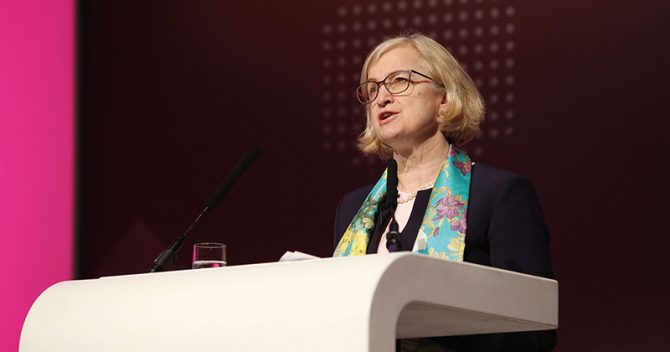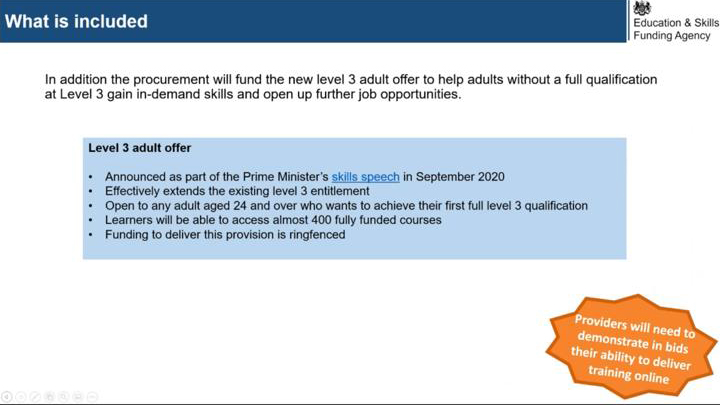All the stops on teacher assessed grades are being pulled out for GCSEs and A-levels, but yet again apprentices appear to be forgotten, writes Jane Hickie
Lockdown three means that the focus must again be on protecting learners and apprentices from losing their livelihoods or not completing their programmes.
But the government’s current measures around apprenticeship opportunities risk looking futile when it won’t allow existing apprentices to achieve and progress in their jobs. Meanwhile, all the stops are being pulled out for GCSEs and A-levels. What happened to levelling up?
Allow me to explain. This lockdown is a monumental challenge for training providers. In normal times, most delivery of work-based learning takes place by definition in the workplace, often underpinned by very high-quality provision.
Most workplaces are closed and last week’s government guidance decreed that all training and assessment must take place remotely wherever possible.
But face-to-face training and assessment have been allowed to continue in some employers’ Covid-secure settings and end-point assessment and functional skills assessments for maths and English can continue on premises where it cannot be conducted remotely.
But these exceptions don’t get to the heart of the problem. The problem is that most workplaces are closed.
The other major obstacle to apprenticeship programme completion is the task of conducting assessments and functional skills tests remotely. Despite the strenuous efforts of providers and awarding organisations, we are still some way off being able to do this in mass volumes.
Remember that in a normal year, three quarters of a million apprentices are on a programme spread all over the country. Half of them work for small, now many struggling, businesses and many of them come from disadvantaged backgrounds.
Therefore when I watch television reports of free or second-hand laptops being handed over to grateful parents of schoolchildren, naturally I am pleased, but my thoughts instantly jump to disadvantaged apprentices who aren’t receiving any support at all.
Subsequent lockdowns have resulted in a massive logjam of untaken tests
Without a laptop or high-speed internet, they cannot sit their functional skills qualification test remotely and if they cannot pass their test, they cannot go on and complete their apprenticeship.
In lockdown one, the government and Ofqual allowed apprentices to be teacher assessed for their functional skills. This was permitted until the end of July, and since then the continued tier restrictions and the subsequent lockdowns have resulted in a massive logjam of untaken tests.
AELP estimates that more than 40,000 apprentices are unable to progress on to their end-point assessments but the government won’t tell us the actual figure ̶ even though it should have the number from providers’ submitted individual learning returns.
Instead, it informed shadow education secretary Kate Green this week, “We do not currently hold the data in the format requested.”
Therefore when Gavin Williamson announced last week that GCSE and A-level exams were being cancelled, we wondered for a moment whether the logjam for apprentices might finally be broken.
But no, the new Ofqual boss quickly quelled such hopes by saying the regulator would recommend different solutions for different types of qualifications. We fear that one rule applies for academic students and another for apprentices. Meanwhile as the Ofqual consultation takes place, the problem grows larger.
And despite being 32 pages, last Friday’s DfE lockdown guidance for apprenticeships didn’t bring any glad tidings to training providers. There was no suggestion of any renewed financial support for providers; just another signposting to the Treasury’s loan schemes for businesses.
Every DfE and regulator missive refers to the maintenance of high-quality provision for apprentices ̶ but guess what? That costs money.
Moreover, with programme starts at half their pre-Covid levels and provider income squeezed, the prime minister’s promise of an apprenticeship guarantee looks as realistic as a wall along the entire Mexican border.
So, since the chief medical officer is stressing safety as the utmost priority, the government must urgently mandate teacher-assessed grades for functional skills where apprentices cannot travel to a test centre.
Otherwise, these young people among the 50 per cent who don’t go to university will find that, once again, they have been forgotten.






